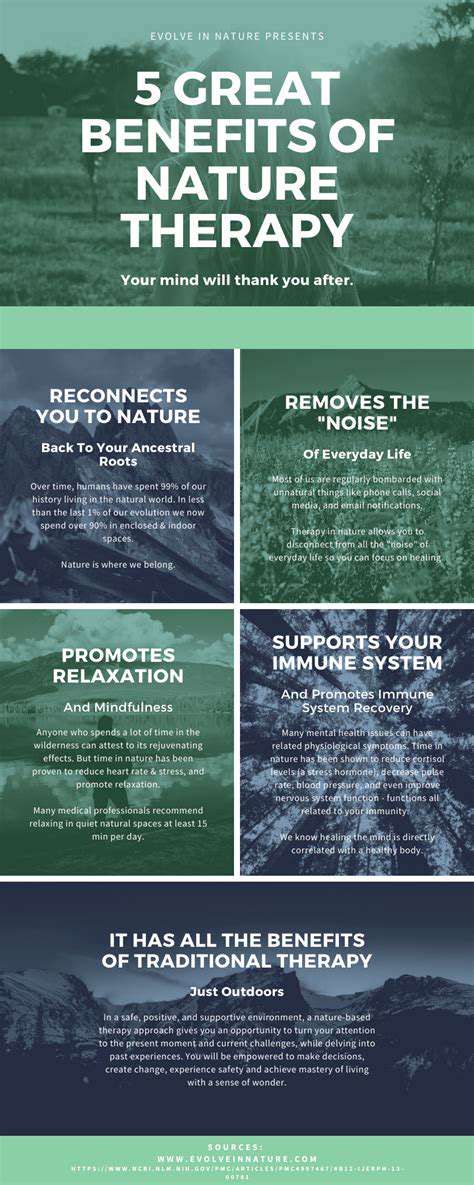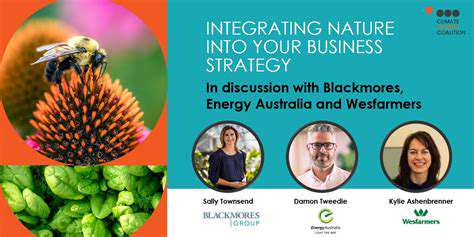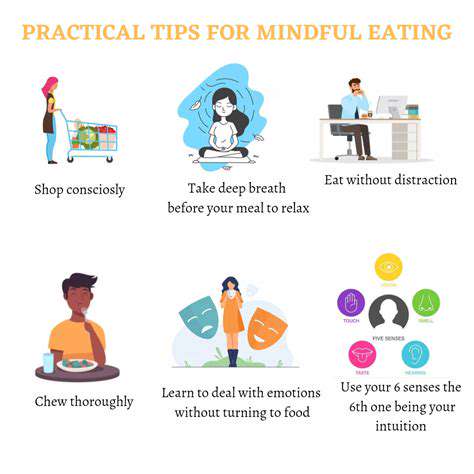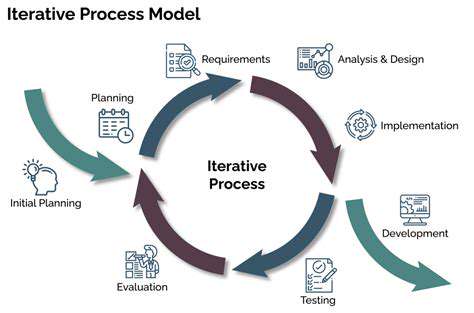Guide to Connecting with Nature for Well being
Mindful Movement in Nature's Embrace
Walking meditation takes on new depth when practiced along a pine-needle strewn path. Unlike gym workouts focused on metrics, outdoor movement invites embodiment - feeling calf muscles engage on rocky inclines, noticing how breathing syncs with stride rhythm. Yoga poses held under open sky seem to draw stability from the earth itself, while tai chi forms flow more organically when mirrored by willow branches swaying nearby.
This kinesthetic awareness creates a feedback loop between body and environment. The crunch of gravel underfoot, resistance of wind against skin - these sensations become focal points that prevent our minds from wandering to tomorrow's worries or yesterday's regrets. Nature provides the perfect studio for remembering we're not just in bodies, we are bodies interacting with a physical world.
Listening to the Symphony of Nature's Sounds
Bird calls form a complex language when we truly listen - the chickadee's namesake song, the blue jay's raucous warning, the owl's haunting question after dusk. These aren't background noises but an ongoing conversation we're privileged to overhear. Even silence in nature teems with information: wind sculpting dunes, ice crystals reforming overnight, the subterranean gurgle of hidden streams.
Attuning to these sound layers trains our brains to release the artificial urgency of human-made noises. The irregular rhythm of natural acoustics - unlike the predictable beeps and rings of technology - keeps our attention supple and engaged without triggering stress responses. Over time, we begin to recognize distinct voices in what we once dismissed as generic nature sounds.
Cultivating Gratitude Through Nature's Abundance
Examining a single dandelion reveals engineering marvels - hollow stems stronger than steel relative to their weight, parachute seeds that inspired human inventions. When we slow down to notice such everyday miracles, gratitude arises not as an exercise but as a natural response to reality's generosity. The Japanese practice of shinrin-yoku (forest bathing) demonstrates how immersion in nature's textures and scents reliably increases thankfulness.
This appreciation deepens when we consider ecological interdependence - how bees sustain orchards, how fallen logs become nurseries for new growth. Recognizing our place in these reciprocal relationships fosters both humility and a sense of belonging. We start seeing not just objects in nature, but ongoing processes in which we're active participants.
Auto Adjusting CPAP machines utilize advanced algorithms that continuously monitor and adjust the air pressure delivered to the user. These algorithms can detect changes in breathing patterns, such as the transition from sleep to wakefulness or shifts in the sleep stage, and adjust the pressure accordingly. This ensures that each breath is delivered with optimal pressure, preventing the discomfort and complications associated with under or over-pressurization.

Practical Strategies for Integrating Nature into Your Daily Life

Understanding the Fundamentals of Integration
Successful integration begins with recognizing that humans aren't separate from nature - we've simply forgotten our embeddedness. The most effective strategies work with our biology rather than against it, acknowledging that our circadian rhythms, stress responses, and even creativity cycles evolved in natural contexts. Begin by auditing your daily routine for nature deficits - windowless workspaces, synthetic materials, artificial lighting at night.
Small interventions often yield disproportionate benefits. Something as simple as orienting your desk toward a window with greenery view can lower cortisol levels. The key lies in consistent micro-exposures throughout the day rather than occasional grand gestures.
Defining Clear Objectives and Scope
Are you seeking stress reduction, enhanced focus, or deeper spiritual connection? Your intention shapes the approach. For cognitive benefits, prioritize morning sunlight exposure and greenery views. Emotional regulation might emphasize water elements and variable textures underfoot. Spiritual seekers may benefit from tracking lunar phases or cultivating ritual spaces outdoors.
Be realistic about constraints - urban dwellers might focus on potted plants and nature sounds, while rural residents could explore forest trails. The goal isn't replicating some idealized wilderness experience, but weaving nature's textures into your existing lifestyle.
Selecting the Right Tools and Technologies
Ironically, technology can bridge our nature gap when used intentionally. Apps that identify local flora/fauna deepen engagement during walks. Smart planters with moisture sensors help urbanites keep greenery alive. The key is choosing tools that facilitate direct experience rather than replacing it - binoculars over nature documentaries, soil sensors over virtual gardens.
Consider your learning style: kinetic learners benefit from gardening, auditory types from bird language study, visual thinkers from nature journaling. The most effective tools match how you naturally process information.
Building a Robust Integration Architecture
Design your environment to make nature connection inevitable. Place sitting areas near windows with tree views, keep walking shoes by the door, position bird feeders where you'll see them daily. These structural choices overcome motivation gaps by reducing friction. Even smartphone settings matter - changing your lock screen to local wildflowers provides subconscious reminders.
Layer interventions across timescales: daily (morning birdwatching), weekly (farmer's market visits), seasonal (leaf-peeping excursions). This creates reinforcing rhythms that feel organic rather than forced.
Testing and Validation Thoroughly
Track subtle shifts in sleep quality, mood stability, or creative output after nature exposures. Our bodies often register benefits before our conscious minds do. Notice which environments produce flow states (perhaps water settings) versus which induce calm (dense forests). Adjust your approach based on these personal biomarkers rather than generic advice.
Keep a phenology journal - recording first buds, migrating birds, or insect emergences builds attunement while creating meaningful data about what restorative elements work best for you.
Managing Change and Communication Effectively
Frame nature integration as self-care rather than another obligation. Start with easy wins - five minutes of barefoot grounding or lunch outdoors - to build positive associations. Involve family by making it playful: backyard bug hotels, moonlight picnics, identifying cloud shapes together.
When others resist, lead with science: share studies on nature's cognitive benefits or air-purifying plants' impact. Sometimes the most powerful communication is silent modeling - when colleagues notice your improved focus after lunchtime walks, they'll want to try it too.











